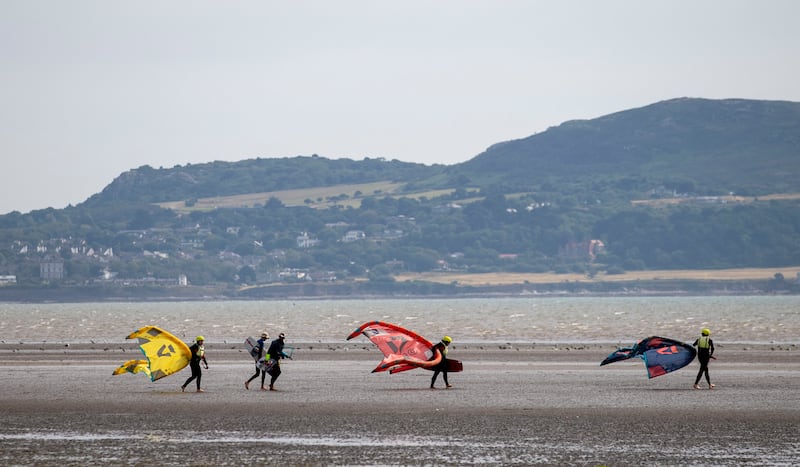Ireland has provisionally recorded its hottest day for 135 years with a reading of 33.1 degrees reported at the Phoenix Park, where observations first began in 1831.
If confirmed, this is the second highest temperature recorded in Ireland, surpassed only by the 33.3 degrees recorded at Kilkenny Castle on June 26th, 1887.
The Phoenix Park reading surpasses Dublin’s previous hottest day on August 2nd, 1990.
A weather station in Trim, Co Meath has recorded 33.4 degrees at 1.06pm on Monday. This is 0.1 degrees above that highest temperature recorded at Kilkenny Castle1887.
READ MORE
However, a Met Éireann spokesman said although the Trim station is connected to its Weather Observations Website (WOW), it is not an official one and the record will not count.
A total of 10 other stations breached 30 degrees on the hottest day of the year so far, including Casement Aerodrome in Co Dublin, Oak Park in Co Carlow, Shannon in Co Clare and Mount Dillon in Co Roscommon.
[ Southern Europe battles wildfires as heatwave spreads northOpens in new window ]
[ Heatwave tips from Irish abroad: Close your curtainsOpens in new window ]
Similar high temperatures are expected in many parts of the south and east on Monday as a plume of hot air, which has brought record temperatures to Spain and France, crosses Ireland. A status yellow temperature warning is in place until Tuesday evening but conditions in the east are expected to reach a maximum of 27 with no repeat of today’s widespread extremes.
Temperatures from Wednesday onwards will also begin to fall closer to July norms, which typically peak at between about 18 and 20 degrees.
The same change in conditions is also due to usher in heavy rain in some parts of the country. On Monday, the Road Safety Authority issued a warning to motorists citing outbreaks of isolated but heavy afternoon rain showers and thunderstorms in the east and north.
Despite an anticipated fall in temperatures, Minister for Older People Mary Butler appealed to more vulnerable sections of society to be mindful of heat exhaustion and heatstroke.
“I urge older people, and anyone caring for someone, to take steps to stay cool and hydrated and monitor for signs of dehydration and heat exhaustion,” she said in a statement.
Monday’s record breaking conditions have continued a trend in recent days. On Sunday, Dublin Airport recorded its highest temperature since records began almost 80 years ago. A temperature of 28.9 degrees was recorded at the station at midday on Sunday, breaching the previous record of 28.7 degrees. Records at the station stretch back to 1943.

Met Éireann head of forecasting Evelyn Cusack had predicted Monday would be the hottest day of the country’s “mini-heatwave”, though Tuesday will be another very hot day over parts of Leinster. A heatwave is defined as five consecutive days with temperatures over 25 degrees.
Ms Cusack did not believe the record national temperature for July would be broken - previously 32.5 degrees at Elphin, Co Roscommon on July 19th, 2006. However, she said the highest temperatures would be “in the same ballpark”.
Maynooth University professor of physical geography (Climate Science) Peter Thorne said last year’s Intergovernmental Panel on Climate Change (IPCC) working group had noted that temperature extremes are becoming more frequent and more severe due to human influences on the climate system.
The outlook for the rest of the week is for more cloudy, cooler conditions.













